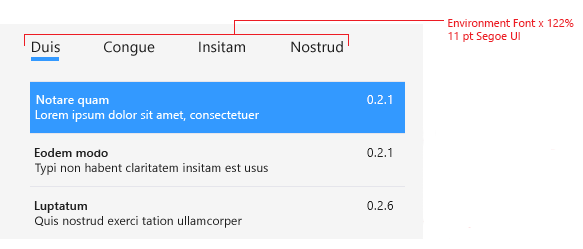Microsoft Outlook For Mac Font Is Restricted To Asian Font
Posted By admin On 20.12.18Select Outlook > Preferences > Fonts. In the Default fonts for composing messages section click the Font button next to the composition style you want to edit. For example, click Font next to New mail to select a default font for new messages, or next to Reply or forward to set a font for outgoing messages. Toggle menu visibility. Search our Knowledgebase. This feature is not available right now. Please try again later. Weird Characters When Replying in Outlook; Weird Characters When Replying in Outlook. March 31, 2015. If you are using Microsoft Word as your Outlook email text editor, the AutoCorrect and AutoFormat settings can cause weird characters to appear in your text when you reply to an email. How to Change the Font in Outlook Web Access. While you can change the font for every message that you create in Outlook 2013 on an individual basis, it can be tedious. So a better option is to change the default font settings so that they are customized to your liking every time you go to type a new message.
• Open any Office application. For example, Word for Mac. • Click Word, or the menu for the Office application you opened, and then select Preferences.
• Under Authoring and Proofing Tools, click East Asian Languages. • Select Japanese, Simplified Chinese, or Traditional Chinese. You'll be prompted to restart the Office application to apply the change. • Open the Office application that you want to use an East Asian language in, and open a worksheet, document, or presentation. All of the East Asian language fonts and tools are available for use in the application. You turn on the East Asian language features in Office 2011 for Mac by using the Microsoft Language Register.
Then, for each Office application that you want to type East Asian characters in, you can select a East Asian input type. • Close any open Office applications. • In the Finder, open Microsoft Office 2011/Additional Tools/Microsoft Language Register, and then double-click Microsoft Language Register to open the application. • On the Select the language to enable for Microsoft Office pop-up menu, click Simplified Chinese or Traditional Chinese, and then click OK. • On the Apple menu, click System Preferences. • Under Personal, click Language & Text, and then click the Input Sources tab. • Select the Chinese - Simplified, Chinese - Traditional, or Japanese check box.
Tip: For more information about keyboard layouts, see Mac Help. • Select the Show Input menu in menu bar check box, and then close the Language & Text dialog box. • Open the Office application that you want to use an East Asian language in. Audio converter for mac.
• On the right side of the menu bar, click the input menu, which is the flag of the current input type, and then click the East Asian input type that you want. The input menu on the menu bar. You can now type East Asian characters in the application that you are using and use the other East Asian language features in Office.
วิธีการตั้งค่า default font Microsoft office 2013 ให้เป็นรูปแบบตัวหนังสือหลักตามที่ต้องการตั่งแต่สร้างเอกสารใหม่ โดยเราไม่ต้องไปตั้งค่า Fonts บ่อยๆ ทำให้คุณสามารถสร้างงานเอกสารได้ออกมาได้อย่างสะดวก และรวดเร็ว ไม่ต้องกังวลเรื่อง Fonts ตัวหนังสืออีกต่อไป คำค้นหา: default font office 2013, word 2013 default font, outlook 2013 default font, how to change default font in word 2013, how to change default font in excel 2013, how to change default font in word 2013 mac, how to set default font in word 2013, ms word default font, set default font in word 2010.

Outlook for Office 365 Outlook 2019 Outlook 2016 Outlook 2013 Outlook 2010 Outlook 2007 In Outlook, the default font is 11-point Calibri in black. It's used when you compose new email messages. You can change the default font and its color, size, and style — such as bold or italic. Outlook allows you to change the font, color, size, and style for new messages and replies and forwards independently.
Select Finder in the Force Quit window, then click Relaunch. If none of your apps are responding, you can force your Mac to restart. You can also force an app to close on your iPhone, iPad, or iPod touch. Boom 3d for mac.